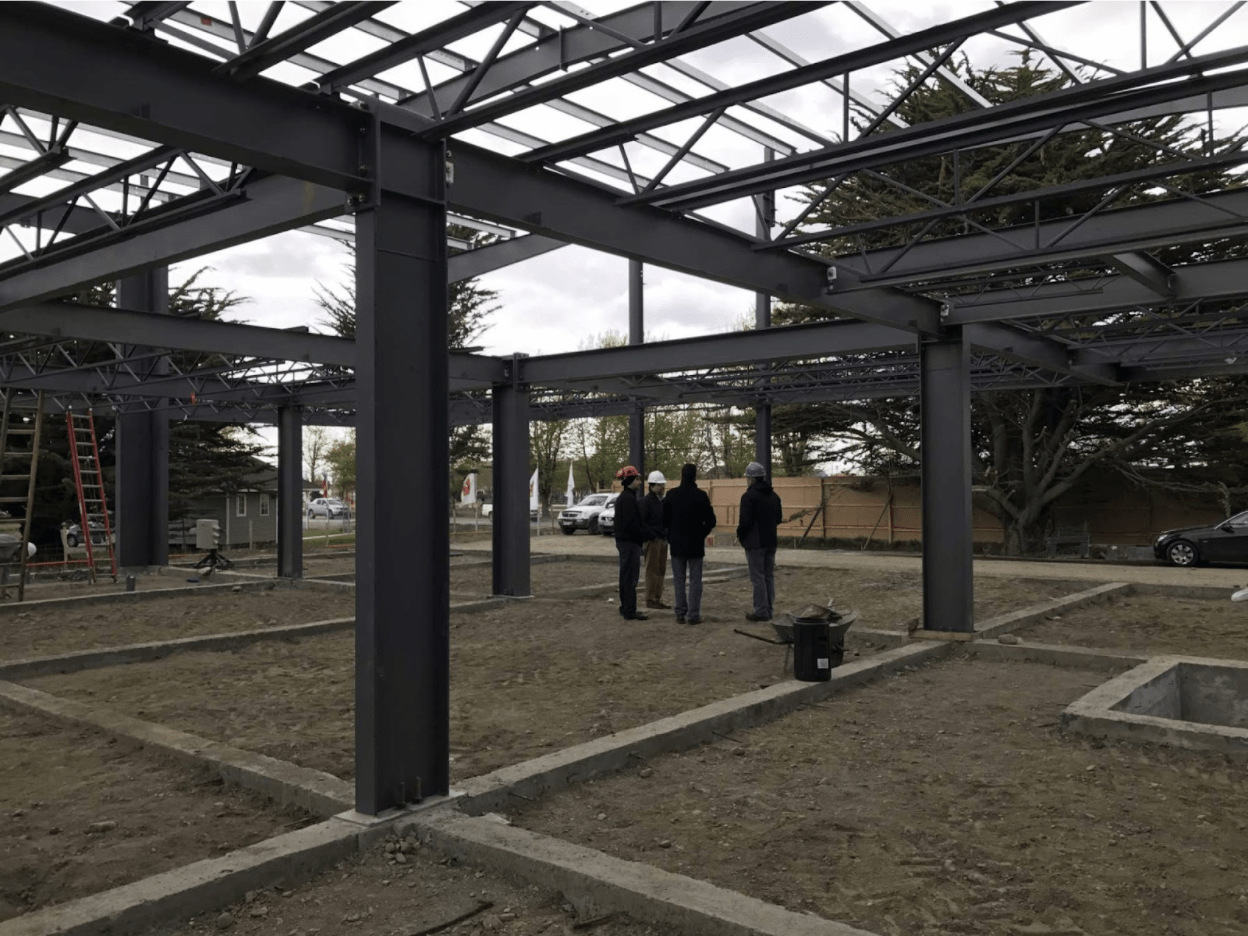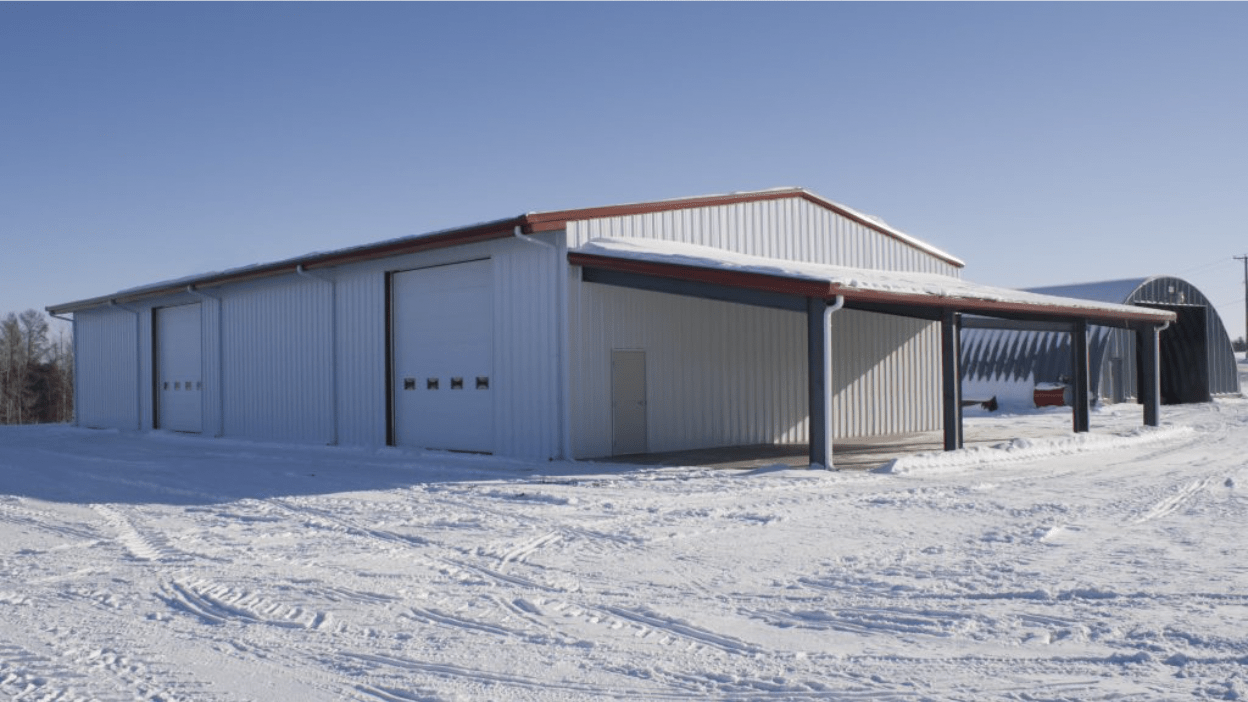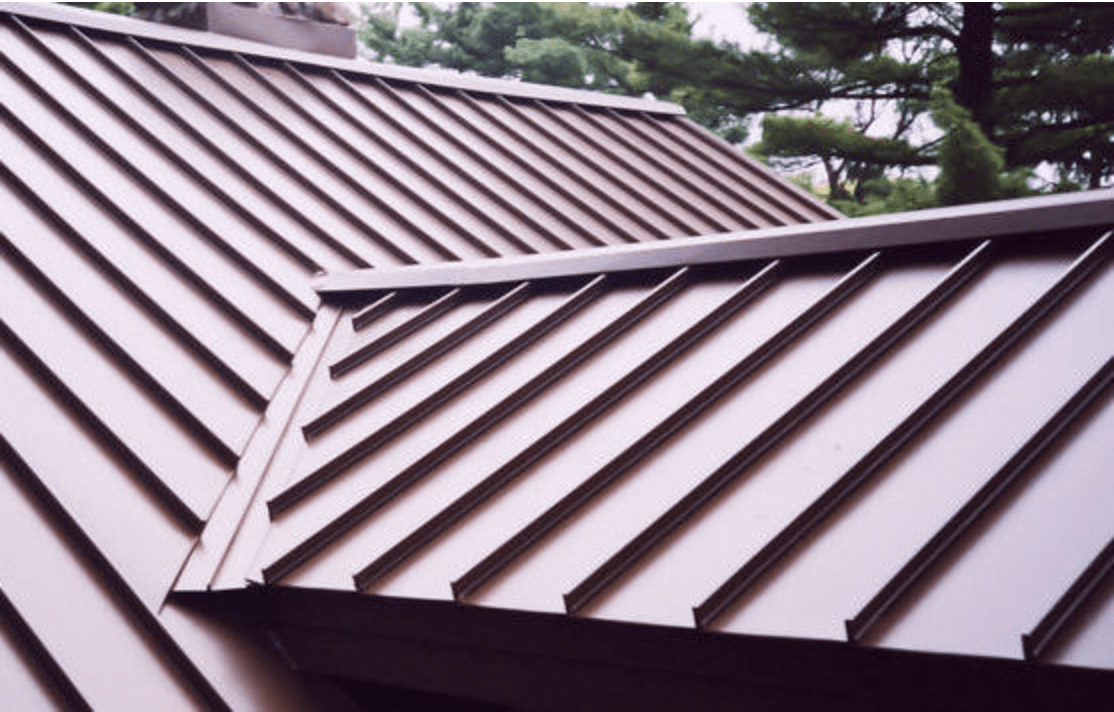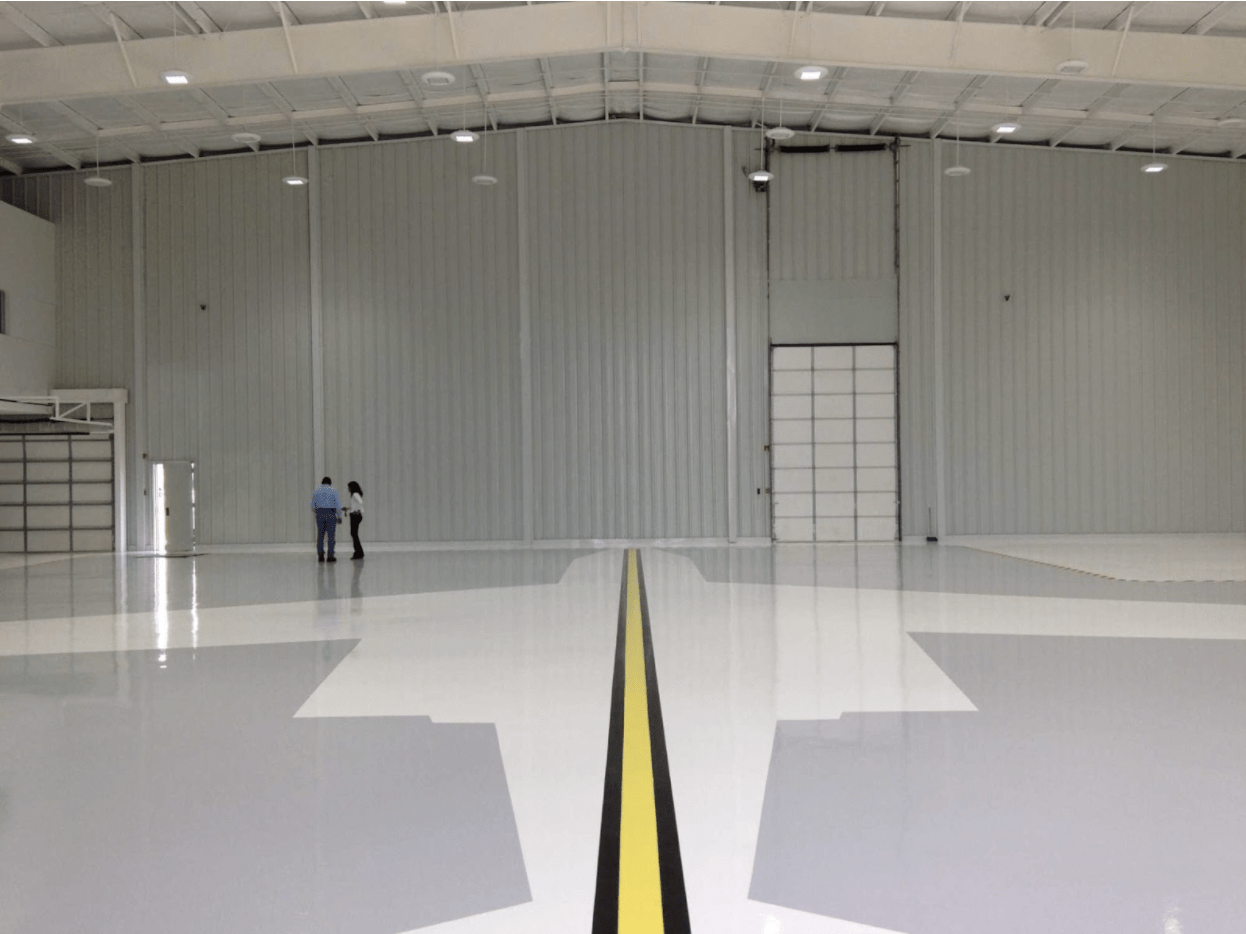Properly waterproofing a metal building will stop moisture infiltration and condensation that can damage finished materials, corrode and deteriorate the metal components, and diminish the thermal performance of the insulation system. In addition, moisture in the building’s envelope can lead to structurally damaging and unhealthy mold.
How to Weatherproof a Metal Building
Weatherproofing and waterproofing a metal building involves sealing its building envelope with components that work together to provide moisture, air, and temperature barriers (insulation, vapor barriers, ventilation, drainage, and early detection and repairs) to stop or minimize water intrusion. The system’s design must consider the building’s intended use and the local climate and building codes.
Typical Layout and Construction of Prefab Steel Buildings
The layout of reliable and robust prefab steel buildings typically includes standard building components that make up the framing. The common parts of all Allied Steel Buildings include roof cladding or sheeting, rake or gable trim, eave strut, end-wall girt, sidewall girt, purlin, rigid frame, end-wall frame, portal frame, framed openings, X-bracing, roof X-bracing, ridge cap, valley, multiple-span columns, mezzanine joists, and mezzanine floor decking. Our clear span buildings allow you to cover a large span without interior columns in order to provide a broad, open, enclosed area the entire width of the exterior frame.
In addition, Allied Steel has many accessories to customize your steel building according to the specific needs of your project, including insulation, windows, doors, skylights, gray coat primer, canopies, overhangs, galvanized framing, transmitting panels, ventilation systems, partition walls, and more.
Our prefab steel buildings’ comparable design and manufacturing provide our customers with a cost-effective, time-efficient, simple-to-construct building that is delivered directly to your job site.
Allied Steel Time-Saving Construction
Components for Allied Steel prefabricated buildings arrive pre-measured and pre-cut at the job site for faster and easier construction with less labor and waste than wood. Builders can quickly assemble our buildings with just a couple of essential construction tools. However, due to the heavyweight of steel, larger buildings may need more expertise and extensive equipment.

Sealing the Exterior Walls
Moisture from rainwater, wind-driven water, and snowmelt can infiltrate the exterior wall through air leaks in the building envelope. Moisture can also enter through the joints connecting the concrete slab and metal walls and at the windows, doors, vents, or roof and floor transitions. Protecting the exterior walls against moisture intrusion involves installing vapor barriers, caulking around joints, glazings, and roof, and diverting water away from walls and foundation with overhangs, downspouts, and gutters.
Sealing the Roof
Leaks in metal roofs, particularly those with low pitches, often occur when temperature changes can cause the roof to expand and contract, leading to corroded panels, weakened seams, and rusty/loose fasteners.

Protecting a metal roof from water leaks and extending its lifespan requires waterproofing at the seams and fasteners with caulking, seam tape, and a waterproofing membrane. Applying a high elasticity sealant to a metal roof will best accommodate the roof’s expansions and contractions.

Condensation Issues When Waterproofing a Metal Building
Condensation within a metal building’s wall system can lead to corrosion, damp-mold-infested insulation, and premature failure of panels and fasteners.
What Causes Condensation?
- From the inside or outside of the steel building, warm-moist air naturally travels towards the cooler interior wall system, forming liquid water (condensation) as the temperature drops below the dew point.
- Condensation in the wall system can occur when a high concentration of water vapor outside the wall system travels towards a lower concentration of moisture inside the wall assembly.
- If not adequately separated or insulated from the wall system, condensation can also occur on wall elements (windows, curtain wall, or metal framing components).

Preventing Condensation in Metal Buildings
Designing a metal building to prevent condensation requires applying several vital components:
1. Use Proper Insulation
Metal buildings need continuous insulation (CI) to minimize condensation occurring from differences between the outside and inside temperatures.
- CI lessens thermal bridging, which creates condensation and heat loss.
- Metal building CI creates a building envelope that more efficiently enables the heating and cooling system to control the interior building temperature, saving money on monthly utility bills.
- In addition, CI absorbs sound, improving the sound quality within the interior of the building.
2. Install Vapor Barriers
Correctly installed vapor barriers seal the building’s envelope to keep outside moisture and air from infiltrating a metal building. However, the permeability of the vapor barrier should allow moisture that does accumulate to escape in order to prevent condensation.
3. Ventilate the Interior
Tight building envelopes with CI can inhibit airflow, trapping unwanted moisture, heat, and fumes. Metal buildings need ventilation to allow these elements to escape without compromising the thermal efficiency of the building.
Ventilating a metal building with louvers, ridge vents, and exhaust fans can help stop condensation by facilitating fresh airflow inside while allowing excess moisture to escape. Ventilating lowers the relative humidity and decreases the dew point temperature to reduce the potential for condensation. Furthermore, providing good airflow can reduce operating costs over the lifetime of your metal building by minimizing the need for mechanical cooling and heating.
4. Prevent Water from Seeping Below
Stopping water infiltration into the foundation walls involves identifying potential water transport mechanisms then applying sufficient waterproofing, diversion, and insulation.
- Clear the area around the foundation of anything that would allow water accumulation, like plants.
- Insulate piping near the foundation, particularly in cold regions where pipes can burst, resulting in seeping water around the foundation.
- Ensure the drainage lines extend a safe distance away from the foundation to avoid increasing the hydrostatic pressure of the adjacent soil.
- Apply waterproofing membranes to a building’s below-grade walls to ensure a leak-free foundation and stop condensation.
5. Look Out for Condensation Troubles
Trapped moisture in a metal building’s wall and roof system can lead to corrosion of metal components and degradation of the insulation’s thermal performance. Early detection of condensation will limit cost damage and repairs.
Types of Condensation to Look For: Concealed and Visible
More damaging and challenging to deal with, concealed condensation occurs when moisture passes into the structure’s interior and condenses on a surface with a temperature at or less than the dew point. Signs of concealed condensation include stains, damp spots, mold on walls or ceilings, peeling paint, damp insulation, delamination of laminated surfaces, and bubbles or blisters in asphaltic surfaces.
Visible condensation occurs on surfaces like the insulation, vapor retarders, skylights, cooling ducts, and cold water pipes, as frosts, water, and ice. Other visible signs of condensation include rust stains on fasteners and framing and sagging or pillowing roof insulation between the purlins.
Make Your Steel Building Dream a Reality with Allied Steel Buildings
Allied Steel Buildings will make your steel building dream a reality. If your building requires heating or cooling, you must protect it from condensation to ensure its structural integrity and thermal performance. Methods to stop condensation include applying insulation and a vapor barrier, installing ventilating and drainage systems, and routinely inspecting for condensation, and immediately addressing any problems.
Don’t hesitate to call us today to learn more about waterproofing metal buildings.
